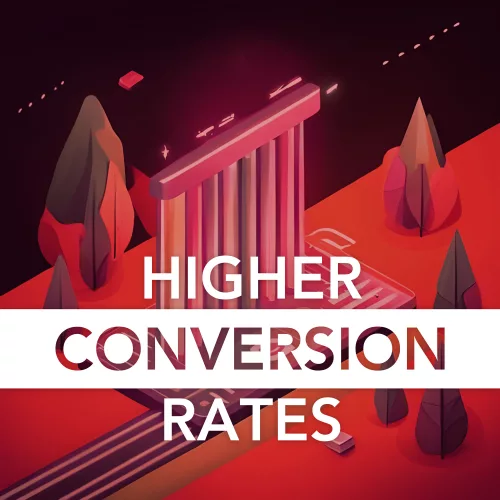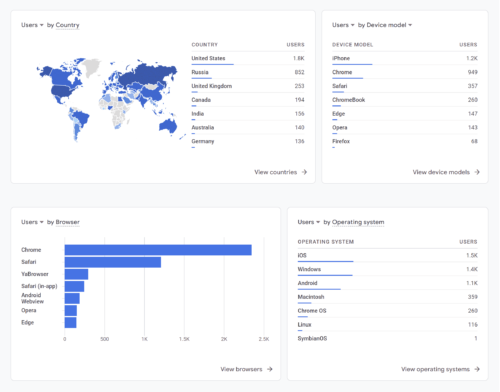
In the world of web design, where first impressions are made in milliseconds and user expectations continue to soar, the stakes have never been higher. Gone are the days of haphazardly throwing together a website and hoping for the best. Today, success lies in a meticulous understanding of your target audience, their desires, and understanding the competition.
Welcome to the world of market research, a game-changing tool that can elevate your web design and development endeavors to new heights. With user surveys, interviews, and usability testing, designers can gather invaluable feedback that helps them refine and enhance various website elements. This data-driven approach enables businesses to optimize their websites’ layout, colors, content, and calls-to-action to align with user preferences and maximize conversions.
So, prepare for a tour through the intricacies of market research and its transformative impact on web design.
What is Market Research?
Market research, in essence, is the systematic exploration of your target market to gather valuable information about customer preferences, needs, and behaviors. It unravels the mysteries that lie beneath the surface, empowering designers and developers to create websites that resonate with their audience on a profound level.
To accomplish this, various market research methodologies come into play, each unveiling unique facets of user perception. From surveys that capture quantifiable data to interviews that delve into the psyche of your audience, market research offers a rich tapestry of techniques. Focus groups bring individuals together for lively discussions, while data analysis uncovers patterns and trends hidden within vast amounts of information.
It’s no secret that understanding your target audience holds the key to crafting captivating digital experiences. By learning the needs and desires of your target audience, you can construct intuitive user interfaces, shape seamless user journeys, and curate content that speaks directly to the hearts of your visitors.
Mastering the Art of Effective Market Research
The first step is to define the research objectives and questions. This crucial phase sets the compass for the entire expedition, guiding designers toward their destination. With a clear picture of what they seek to uncover, designers can narrow their focus and unveil the answers that will shape their design decisions.
With objectives in hand, designers must choose the right research methods and tools to navigate the vast expanse of market research. Surveys, interviews, focus groups, and data analysis all beckon, each with its unique strengths and limitations. It’s through careful selection that designers can unearth the insights they seek, selecting the most fitting methods to capture the essence of their audience.
But gathering data is just the beginning. The true art lies in analyzing that data effectively, distilling it into actionable insights. From uncovering patterns and trends to interpreting customer feedback, designers must become skilled data navigators. It’s through this analysis that the pieces of the puzzle fall into place, revealing the design choices that will resonate with their audience.
Cutting-Edge Market Research Techniques for Web Design
In the competitive world of web design, staying ahead of the curve requires an arsenal of innovative market research techniques. It’s a battle to understand the intricate nuances of user behavior, unravel the secrets of competitors, and track the ever-shifting landscape of web analytics.
User surveys and questionnaires emerge as the vanguards of market research, empowering designers to gain direct insights from their target audience. With carefully crafted questions, designers can tap into the sea of user preferences, motivations, and pain points. These digital canvases become the bridge between designers and users, enabling a deeper understanding of their needs and desires.
But sometimes, words alone cannot capture the essence of user experiences. That’s where user interviews and usability testing swoop in to save the day. By engaging in one-on-one conversations or observing users in action, designers can witness the intricate dance between users and their digital environments. Through these intimate encounters, designers uncover the hidden gems of user interactions, paving the way for refined and intuitive designs.
Knowing your competition is essential. Competitive analysis and benchmarking are formidable allies, allowing designers to dissect rival strategies and positioning. By scrutinizing competitors’ strengths and weaknesses, designers gain the wisdom to differentiate their offerings and outshine the rest.
But numbers don’t lie, and web analytics and data tracking hold the key to unlocking the secrets of user behavior. From bounce rates to click-through rates, every interaction leaves a digital footprint. Through the lens of web analytics, designers can navigate the wealth of data, extracting invaluable knowledge. It’s a journey where trends and patterns emerge, guiding designers toward data-driven decisions and optimized user experiences.
Designing for the User
Crafting digital experiences that captivate, engage, and inspire requires a deep understanding of the target audience. This is where market research emerges as the hero, providing designers with the tools to create user-centered designs that hit the mark.
At the heart of user-centered design lies the concept of user personas, and market research acts as the guiding light in their creation. By diving deep into the depths of research insights, designers can paint a vivid picture of their target audience. These user personas embody the hopes, dreams, and pain points of real users, empowering designers to empathize with their needs and tailor experiences to their preferences.
Every element, from the layout to the color scheme, is carefully crafted to resonate with the target audience. It’s a dance of aesthetics and functionality, where design choices are informed by the rich tapestry of market research insights. The result? Websites that feel like a personalized sanctuary for users, effortlessly guiding them through their digital journey.
Market research also influences the content and messaging that graces these user-centric designs. By understanding the language, desires, and motivations of the target audience, designers can weave a narrative that resonates deeply. Whether it’s a catchy headline, compelling copy, or a powerful call-to-action, each word is meticulously chosen to create an emotional connection with users. Market research becomes the compass that guides designers in crafting content that not only informs but also inspires action.
Market Research for Website Optimization
Websites are the gateway to success for businesses of all sizes. To stay ahead of the curve, constant optimization is key. This is where market research takes center stage, guiding the way toward refining and enhancing websites to deliver remarkable results.
One of the core pillars of website optimization is testing and refining website elements based on user feedback. Market research empowers designers and developers to tap into the thoughts, opinions, and preferences of users, ensuring that every aspect of a website resonates with its intended audience. By leveraging user feedback, insights are gained into what works, what needs improvement, and what delights users. It’s a continuous feedback loop that enables iterative enhancements to be made, ensuring that the website remains finely tuned to deliver an exceptional user experience.
A/B testing is a powerful weapon in the arsenal of website optimization. This technique involves creating multiple versions of a website element, such as the layout, colors, or call-to-action buttons, and exposing different segments of users to each variation. Through rigorous data analysis, the performance of each variant is evaluated, allowing designers to identify the winning combination that maximizes conversions and achieves business goals. Market research acts as the compass, guiding the selection of variables to test and providing valuable insights into user behavior and preferences.
With data-driven insights in hand, iterative improvements become the name of the game. Market research equips businesses with the tools to identify trends, patterns, and opportunities for growth. By analyzing user behavior, engagement metrics, and conversion rates, businesses can fine-tune their websites to deliver optimal performance. It’s an ongoing journey of continuous improvement, where market research serves as the north star, illuminating the path to success.
Market Research and SEO
In the digital arena, where search engine rankings reign supreme, the marriage of market research and search engine optimization becomes a formidable force. As we delve deeper into the realm of website optimization, we mustn’t overlook the critical role that market research plays in propelling websites to the top of search engine results pages.
At the heart of successful SEO lies the art of keyword research and analysis. Market research empowers businesses to identify the most relevant and impactful keywords that resonate with their target audience. By understanding the language and phrases that users employ when searching, businesses can optimize their website content to align with user intent. This relationship between market research and SEO ensures that websites rise to the surface when users seek solutions, harnessing the power of keywords to attract and engage visitors.
Adaptation is key. Market research serves as a steadfast compass, guiding businesses through the turbulent seas of algorithmic changes. By monitoring trends, tracking user behavior, and keeping up with industry shifts, businesses can adapt their SEO strategies to maintain their competitive edge. Market research empowers businesses to stay one step ahead, ensuring that their websites continue to shine amidst the ever-changing search engine landscape.
Let Market Research Shape Your Web Design Strategy
Market research emerges as the unsung hero, breathing life into the creative process. It guides decision-making, informs design choices, and fuels the iterative evolution of websites. The convergence of user-centered design and data-driven optimization creates an unstoppable force, where the needs and desires of users take center stage.
Yet, we must acknowledge the challenges that lurk in the shadows, threatening to impede our research endeavors. Budget constraints may attempt to clip our wings, but resourcefulness and prioritization emerge as our allies. Research validity and reliability beckon for our unwavering commitment, driving us to adopt rigorous methodologies and embrace diverse data sources. The ever-changing market dynamics demand our vigilance, urging us to stay one step ahead through real-time data collection and constant market monitoring.
Armed with insights and data, we stand ready to conquer the digital realm and create experiences that resonate deeply with our users. The future of web design lies in the hands of those who dare to embrace the power of market research. Together, we will forge a path toward unparalleled success, where data-driven decisions propel us toward the forefront of innovation. The possibilities are boundless, the rewards immeasurable. Embrace the journey, and let market research guide your way.












